A Case in Communism: The Super Mario Story — Ned Martin’s Amused
A Case in Communism: The Super Mario Story
Contents
Introduction

To anyone raised in the 80’s, few names have such impact as the Super Mario Brothers do. We played their video games, watched their cartoon show, read their newsletter, bought their merchandise, ate their breakfast cereal, and even watched the piece of sh*t movie “The Wizard” starring the young, chubby cheeked miscreant Fred Savage because Super Mario Brothers 3 made an appearance.
But aside from the slightly racist stereotyping of Mario and Luigi as food loving, NY fat bodies with ridiculous Italian accents, was there anything really insidious behind the scenes? The staff here at Murderize.com has found something more, something… sinister… lurking behind the moustached countenances of Mario and Luigi. We don’t have enough evidence to prove anything, just a sparse trail of breadcrumbs to follow. And this trail begins with the game that started it all, Super Mario Bros. Beware brainwashed fools, for this stunning expose will change the way you look at your favourite Nintendo hero forever. No longer the innocent Brooklyn plumbers, it now appears Mario and Luigi are nothing more than communist puppets engineered to program, oh so subtly, Marxist ideals into our impressionable minds!
Exhibit A: Mario’s Colour Scheme
If anything can be said about Mario, it is that he seems to wear quite a bit a red. It’s on his name; it’s the colour of his suspenders, his super mushrooms, his flag, even his hat. But maybe this is all just a string of coincidences. Maybe the colour red being all over Mario and his games means nothing. After all, he’s not entirely red - his hair, shirt and shoes aren’t…
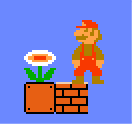
Or are they?
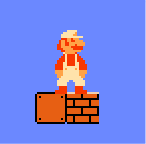
Is this just a random occurrence by the Nintendo programmers, or was red selected intentionally and with purpose?
Exhibit B: The People’s Hero
The inhabitants of the Mushroom Kingdom are portrayed by Nintendo as slow-witted, poorly coordinated beasts of burden. Even Toad, who oddly enough gets captured in every world, seems only able to repeat a singular phrase. While Mario is supposedly fighting against a tyrannical Despot, we can see how expendable the people become when they hinder Mario’s bloodthirsty pursuit for power.
Exhibit C: King Koopa
While Mario’s quest to save the princess seems genuine enough, we find ourselves easily distracted from the real result of this adventure- the deposition of the current monarchy. Few notice the significance of the villain of this game, King Koopa, being an actual king.
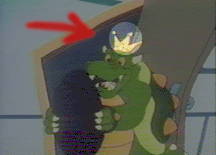
While Mario is smashing and stomping his way across the Mushroom Kingdom, a popular government is being overthrown! Does this not bring our minds to the Russian Revolution, where the entire Royal family was deposed and executed by communists? Is the portrayal of kings as vile reptiles not an important message? One wonders what will become of the Princess he is attempting to “rescue” once Red Mario seizes power himself…
Exhibit D: Mario’s Flag Switching
At the end of each level, Mario must remove a flag and raise his own. As with every other duplicit facet of this game, nothing seems wrong here. But upon closer inspection the flags involved show exactly where Mario’s loyalties lie:
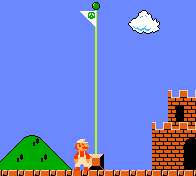

Hmm, a flag with the peace symbol on it. Your militant dictatorship can’t have that, now can it Mario?
![]()
Once the castle is seized and the resident leader sacked (and thrown into a lake of fire), we see no more clearly what Mario’s intentions are, than when he raises his own flag of victory.
What’s that flying high over the ramparts? The Peace symbol of the Mushroom Kingdom? The Stars and Stripes? The Olive Branches of the United Nations? No, we can see quite clearly it’s the Star of Russia. Go check for yourself, these pictures are not faked.
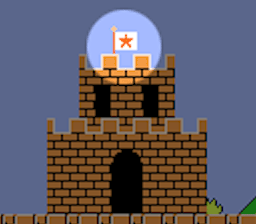
Exhibit E: Mario’s Family Resemblance?
Video game heroes are traditionally people we would like to emulate. Sonic the Hedgehog is fast and quick-witted. The Contra commandos are total badasses, even if they die in one hit. And Link wields a cool sword and has a harem of hot fairy bitches waiting off of him. What kid worth his legos wouldn’t want to be any of these fine role models? Why then, as their flagship hero, does Nintendo choose an overweight, big-nosed plumber with an ungainly moustache and ridiculous suspenders? Why was this, the most unlikely heroic figure, chosen? Unusual yes… but deliberate? Looking at the evidence in light of this new Communist hidden agenda, the answer for this mystery is obvious. Mario, and his short-lived brother, are none other than cartoon representations of Joseph Stalin. Stalin was Russia’s amicus humani, amor patriae or communist super man. So could this “super” Mario represent another “super” man? Well, that is for you to decide.
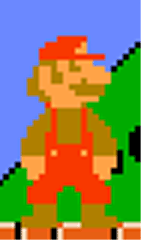
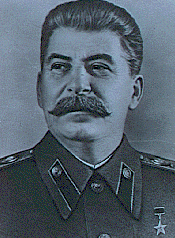
Based on the evidence, a sinister new picture emerges about our cherished childhood hero. What follows is a dramatization, based on what we believe is really going on in Super Mario Bros.
A Case in Communism: The Super Mario Story
One peaceful day in the Mushroom Kingdom…
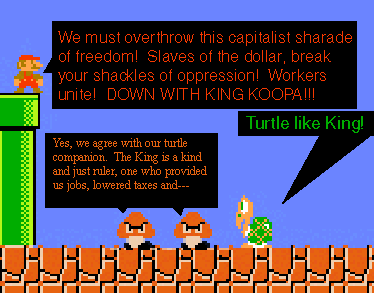
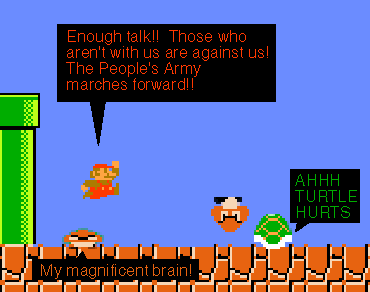
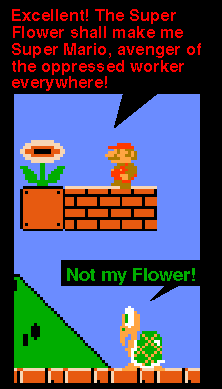
Will Mario be stopped?
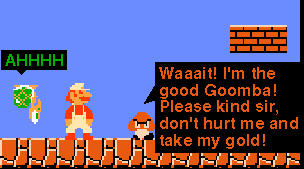
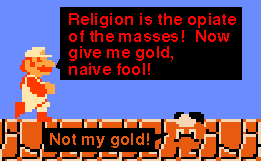
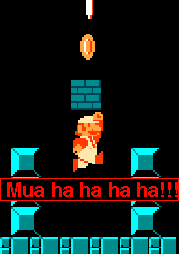
Will Mario’s brain smashing, gold stealing ways ever end? Find out what King Koopa has to say…
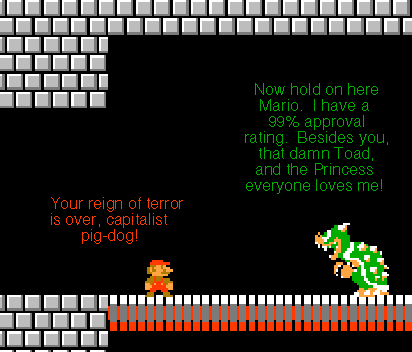
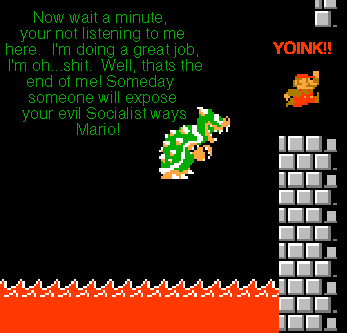
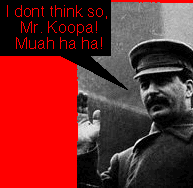
Don’t miss the horrific conclusion!
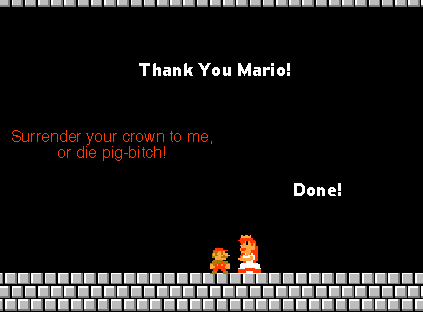
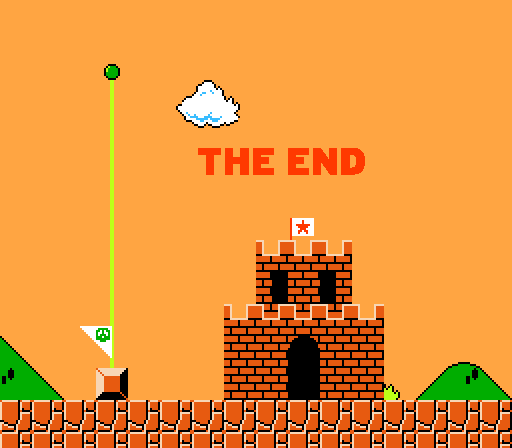
Credits
Original story from http://www.murderize.com/Articles/CommunistMario/
Super Mario Bros. and all character names are copyrights of Nintendo Co. Ltd.
And for your further viewing pleasure, don’t forget to watch The People’s Mario.